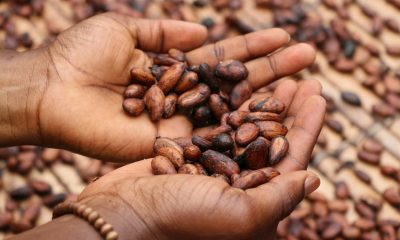Featured
Commodities markets affected by higher US dollar
FCOJ was lower once again on the higher US Dollar and the good growing conditions seen in Florida so far this year. Florida has been spared any hurricanes or other serious storms this year in a year that has been very active for tropical storms with a record number of tropical storms hitting the US. The lack of damaging weather usually means lower prices for futures.

Wheat
Winter Wheat markets were lower on Friday and were lower for the week as the US Dollar turned higher and hurt demand hopes. World demand for US Wheat depends mostly on lower prices for US Wheat to compete with Russia, Europe, and other sellers, and the higher US Dollar against a basket of currencies makes this hard to happen. The overseas weather is mixed. Western Europe is likely to get some rains in the short term, but southern Russia could stay dry. Some showers are forecast for Ukraine this week. The country has also been dry. These areas are trying to plant the next Winter Wheat crop but the dry weather and the dry soils are keeping farmers out of the fields. Less production is likely in Argentina due to drought. About half of Argentine growing areas are affected. Conditions are improved in the US after some rains fell in the Great Plains but the southern Great Plains remains mostly hot and dry. The Midwest has had good rains.

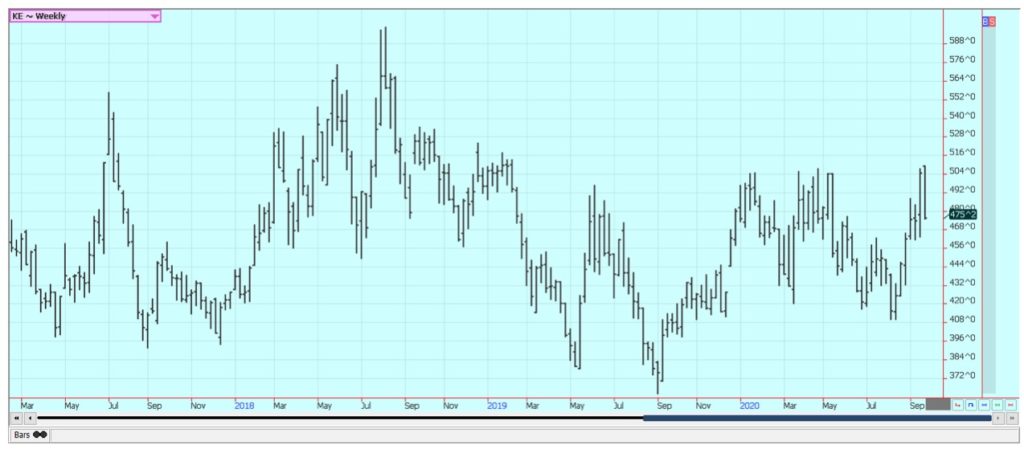
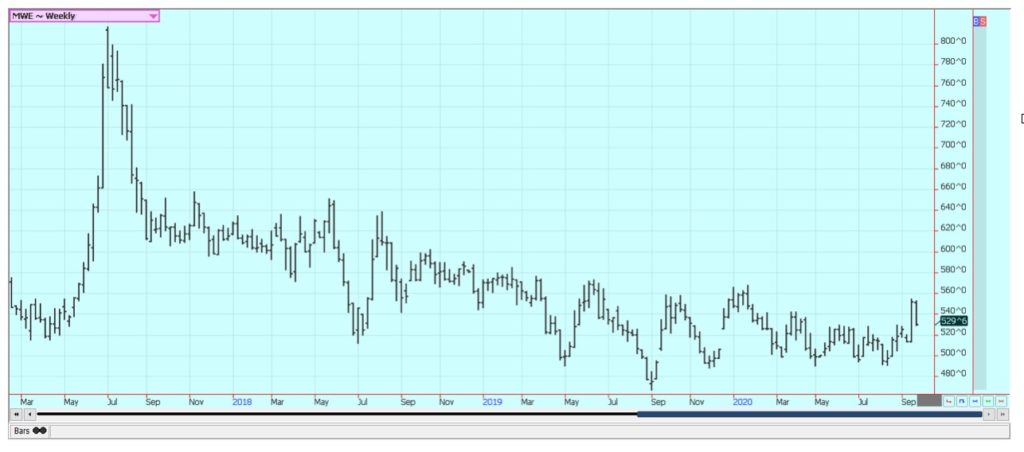
Corn
Corn and Oats were both a little lower last week. Demand is holding strong for exports, but it is harvest time and initial yield reports have been mixed but generally strong. The demand has come primarily from China as the state companies bought for the reserve, but that buying appears to be completed now. USDA has found less damage to crops in Iowa and northern Illinois due to the drought and derecho winds that hit both areas a month ago. That allowed for the higher yield, production, and ending stocks estimates. The harvest is concentrated in the southeast and Delta for now and has expanded into the Midwest with very good harvest conditions. The yield reports have been mixed but appear to be good overall. The harvest will produce a good crop, but maybe not a great crop.
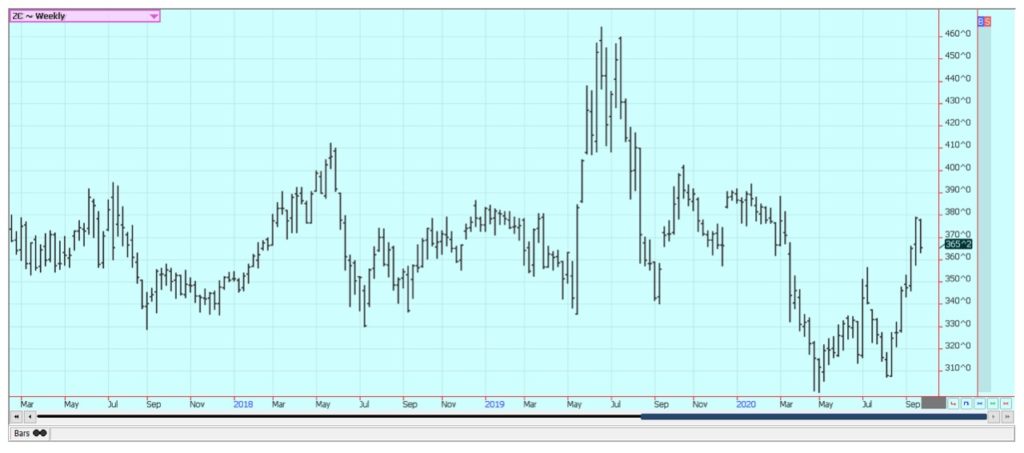
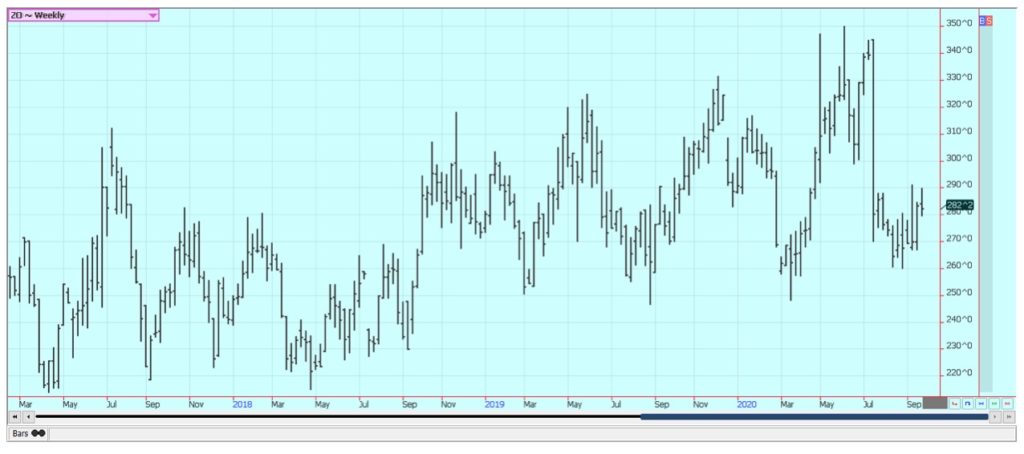
Soybeans and Soybean Meal
Soybeans and the products closed a little lower for the week as the harvest started to expand and as reports indicated that the Chinese buying for the reserve was finished. Funds and other speculators were the best sellers on the week in futures. Soybeans were the leader to the upside due to the strong Chinese demand until this week. The trade generally expects China to shift its buying back to Brazil in the near future, but Brazil has been dry as has Argentina and some of the early plantings has been delayed. That might keep the Chinese buying in the US for a little longer, but only for the crushers and not for the reserve. Buying volumes should be less from China and the weekly export sales report should start to reflect less demand this week.

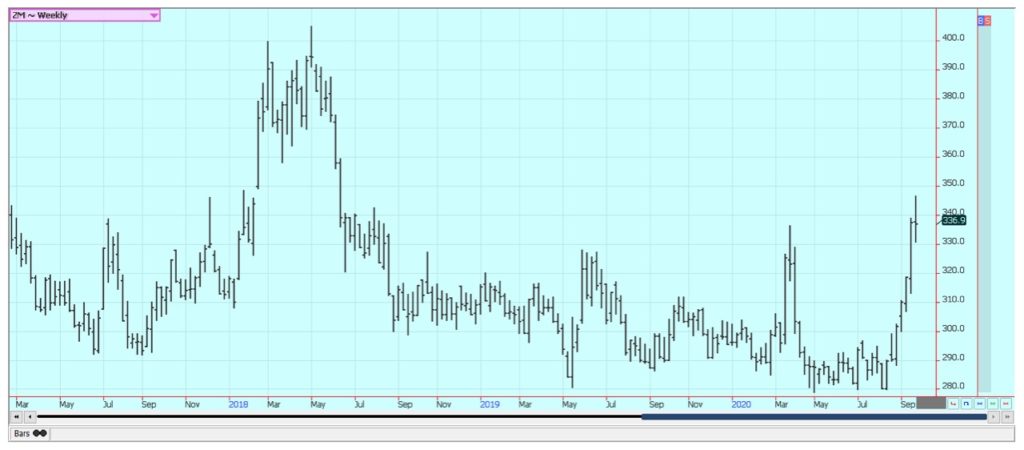
Rice
Rice was slightly lower last week as the harvest pressure went against improved demand ideas. There was talk in the market that Iraq had tendered, but there was no result announced. The weekly export sales report was positive for the second week in a row. Export sales were down but still well above the four-week average. Brazil was a buyer of 7,000 tons of Rough Rice and much of Central America was noted buying as well. Total Brazil purchases are now 37,000 tons. The rebound in demand supported futures and pushed the market to test recent highs for the move. The harvest has been active in most states with good field yields reported. Quality is said to be very good, especially in Arkansas. Milling yields are higher and appearance is very good with minimal chalk or peck showing.

Palm Oil and Vegetable Oils
Palm Oil closed lower on ideas of increasing production. It is seasonally a time for trees to produce more due to more regular rains. Getting workers to do the harvest has been hard, though, and the lack of labor has been a big problem. At least some of the plantation owners have asked for more migrant workers to cover the lack of workers that can be sourced locally. Demand reports from the private surveyors are stronger this month. China has been a major buyer as vegetable oils prices inside the country have been very strong. Most importers seem to have enough stocks on hand due to the Coronavirus pandemic. Soybean Oil was lower and Canola was lower. Canola farmers have withdrawn from the market and speculators are selling due to harvest pressure. The Canadian Dollar has weakened and this has helped support Canola.
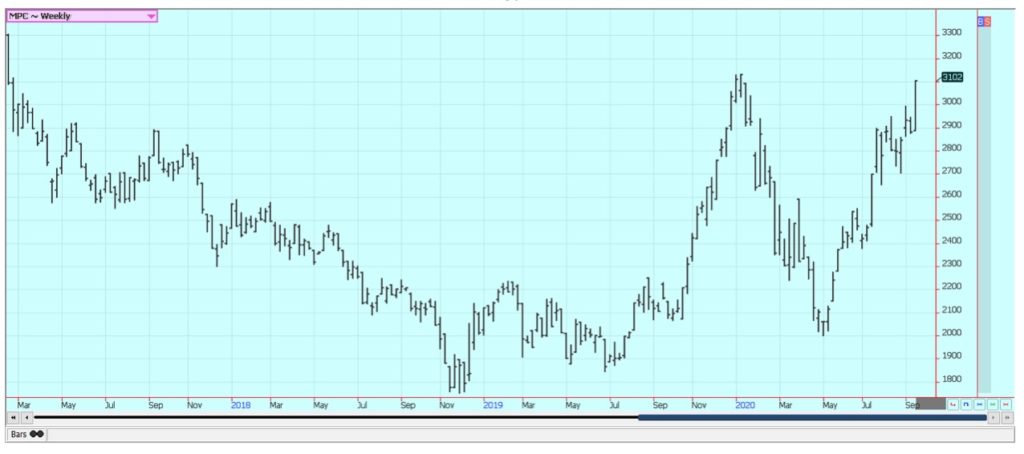
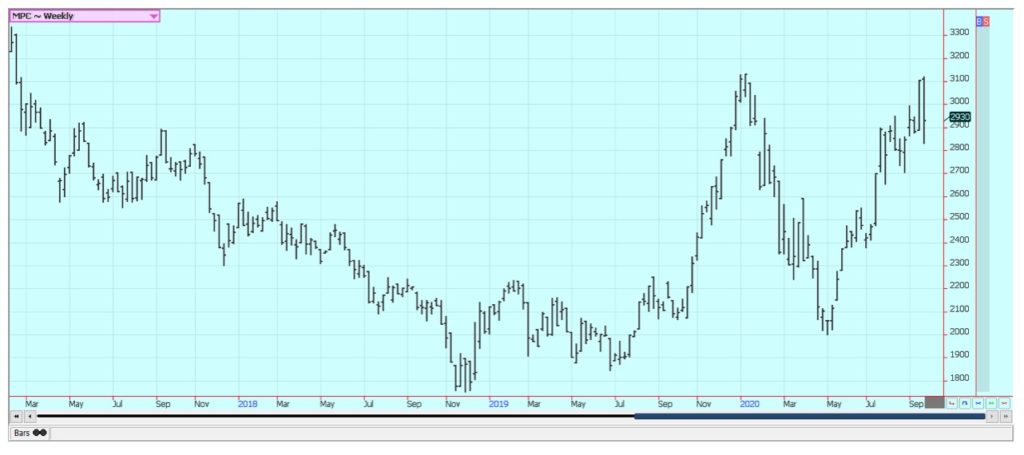

Cotton
Cotton closed lower for the week and trends are still sideways on the weekly charts. Demand has improved over the last couple of weeks but the weekly export sales report showed just moderate demand last week. There was no major Chinese demand, unlike the previous week. Demand should stay weak as long as the Coronavirus is around. Shopping is hard to do and many people are still unemployed. This is true in just about all countries. Hurricane Sally moved into the Southeast and brought some heavy rains. Ideas are that most of the Cotton crops in the region escaped any major damage that the storm could have brought. The supply losses are in the market now. However, the Harvest is underway and the tropical season is active.
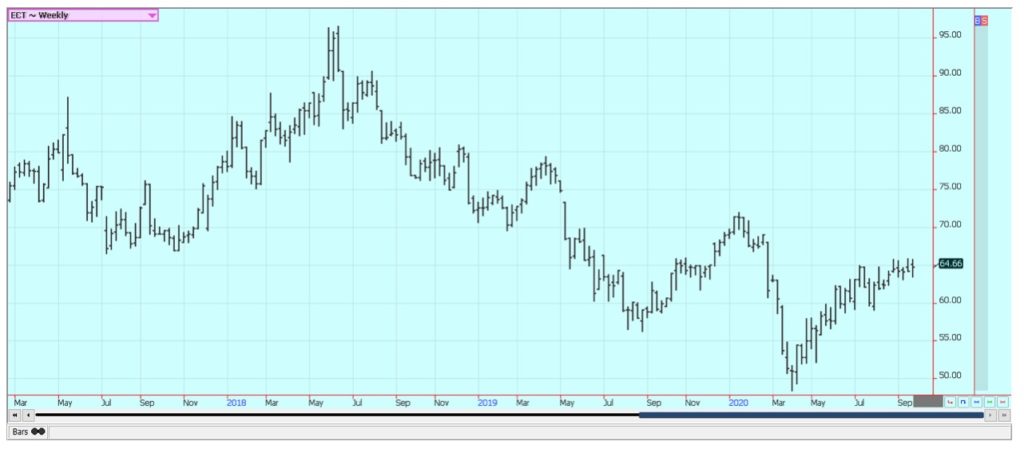
Frozen Concentrated Orange Juice and Citrus
FCOJ was lower once again on the higher US Dollar and the good growing conditions seen in Florida so far this year. Florida has been spared any hurricanes or other serious storms this year in a year that has been very active for tropical storms with a record amount of tropical storms hitting the US. The lack of damaging weather usually means lower prices for futures. The Coronavirus is still promoting consumption of FCOJ at home. Restaurant and food service demand has been much less as no one is really dining out. Florida production prospects for the new crop were hurt by an extended flowering period, but the weather is good now with frequent showers to promote good tree health and fruit formation. Import demand to the US should be minimal as US prices remain below those of Europe. Brazil has been too dry and irrigation is being used. Some showers are in the region now to help in Sao Paulo.
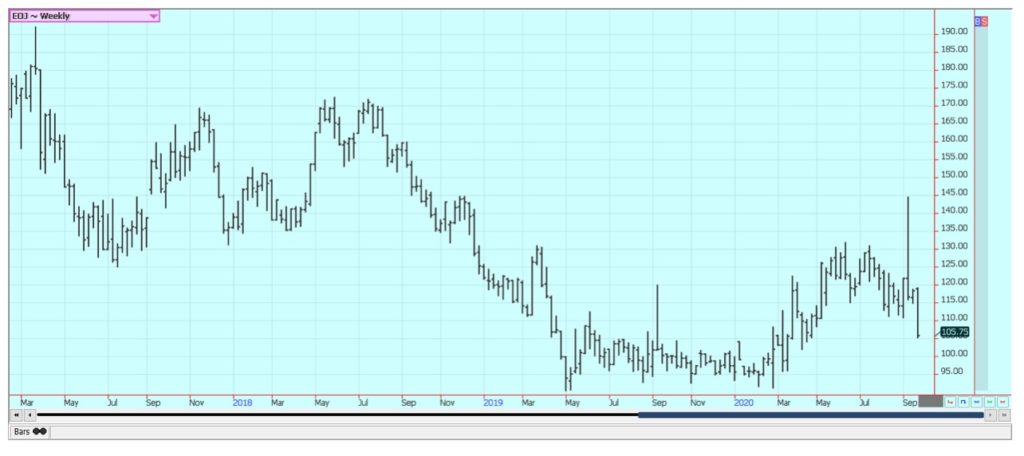
Coffee
Futures were higher on Friday, but lower last week in New York and in London. London was the leader to the downside. New York is close to support areas near 109.70 on the weekly charts. London had been better supported due to stronger demand ideas and worries about the weather in Vietnam. The demand from coffee shops and other foodservice operations is still at very low levels. Consumers are still drinking coffee at home. Reports indicate that consumers at home are consuming blends with more Robusta and less Arabica. Vietnam was dry during the flowering time and is now getting rains. Production ideas are lower, but conditions have stabilized and so has the production outlook. The Brazil harvest is over. Ideas are that production is very strong this year as it is the one year for the trees.

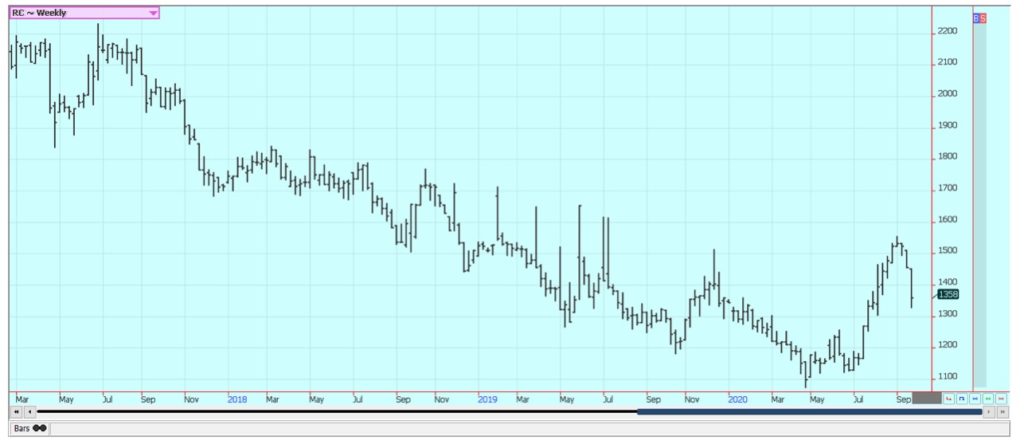
Sugar
New York and London were a little higher as world petroleum prices were mostly steady at lower levels. Brazil mills have been producing more Sugar and less Ethanol due to weak world and domestic petroleum prices, but that might be changing as petroleum prices start to firm up. India is thought to have a very big crop of Sugarcane this year but getting it into Sugar and into export position has become extremely difficult due to Coronavirus lockdowns. Thailand might have less this year due to reduced planted area and erratic rains during the monsoon season. There are reduced flows from rivers from China to hinder irrigation of the crops.

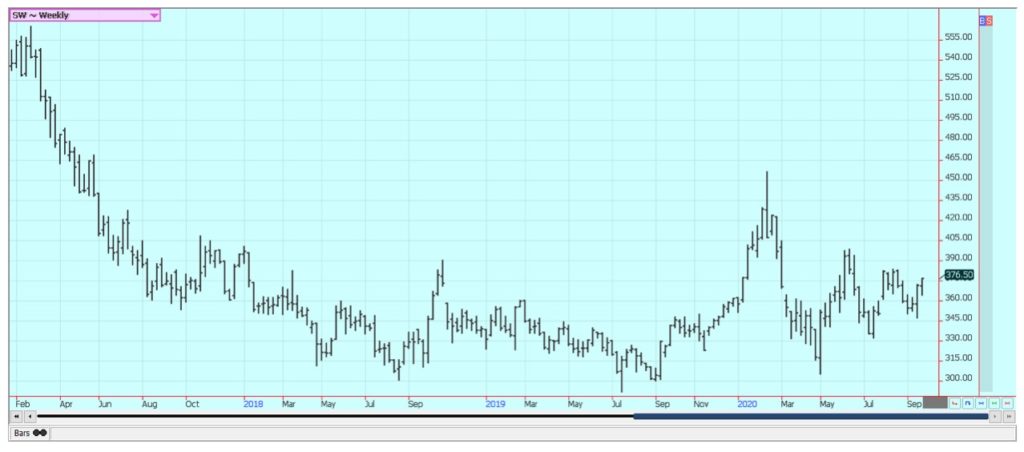
Cocoa
New York and London closed higher. The current crop features strong production but there are worries about the next crop. The harvest for the next main crop just started in southeast Nigeria and will spread to the rest of West Africa in the coming weeks. There are a lot of demand worries as the Coronavirus is not going away and could be making a comeback in the US. Europe is still trying to open its markets again but the Coronavirus is still around and is in fact coming back and consumers are reluctant to buy. Ideas are that Southeast Asia also has good crops.
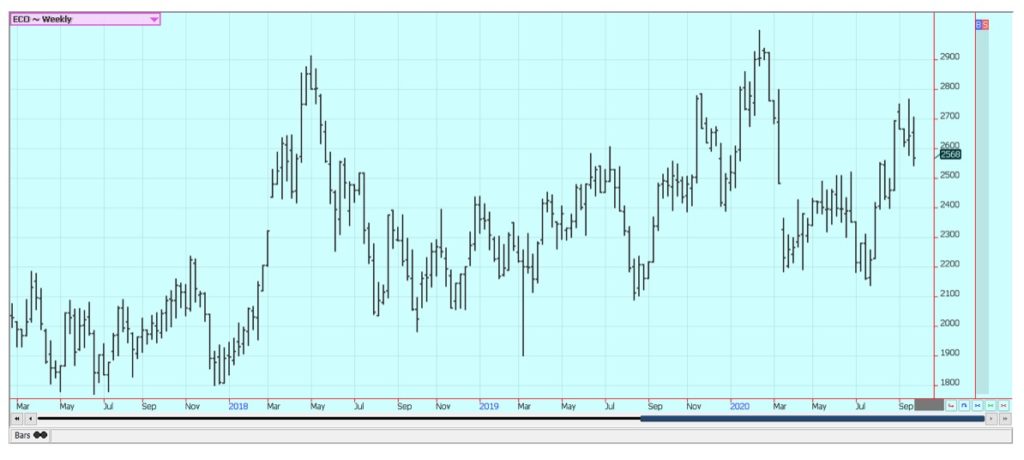
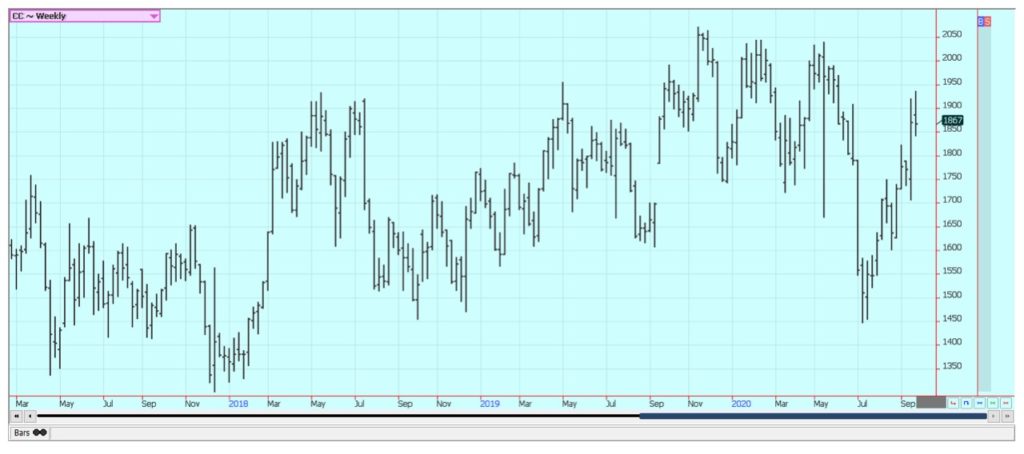
—
(Featured image by Loretta Rossiter via Pixabay)
DISCLAIMER: This article was written by a third party contributor and does not reflect the opinion of Born2Invest, its management, staff or its associates. Please review our disclaimer for more information.
This article may include forward-looking statements. These forward-looking statements generally are identified by the words “believe,” “project,” “estimate,” “become,” “plan,” “will,” and similar expressions. These forward-looking statements involve known and unknown risks as well as uncertainties, including those discussed in the following cautionary statements and elsewhere in this article and on this site. Although the Company may believe that its expectations are based on reasonable assumptions, the actual results that the Company may achieve may differ materially from any forward-looking statements, which reflect the opinions of the management of the Company only as of the date hereof. Additionally, please make sure to read these important disclosures.

-

 Crowdfunding2 weeks ago
Crowdfunding2 weeks agoDolci Palmisano Issues Its First Minibond of the F&P “Rolling Short term” Program
-

 Africa18 hours ago
Africa18 hours agoBLS Secures 500 Million Dirhams to Drive Morocco’s Next-Gen Logistics Expansion
-

 Fintech1 week ago
Fintech1 week agoRipple Targets Banking License to Boost RLUSD Stablecoin Amid U.S. Regulatory Shift
-

 Biotech4 days ago
Biotech4 days agoBiotech Booster: €196.4M Fund to Accelerate Dutch Innovation


